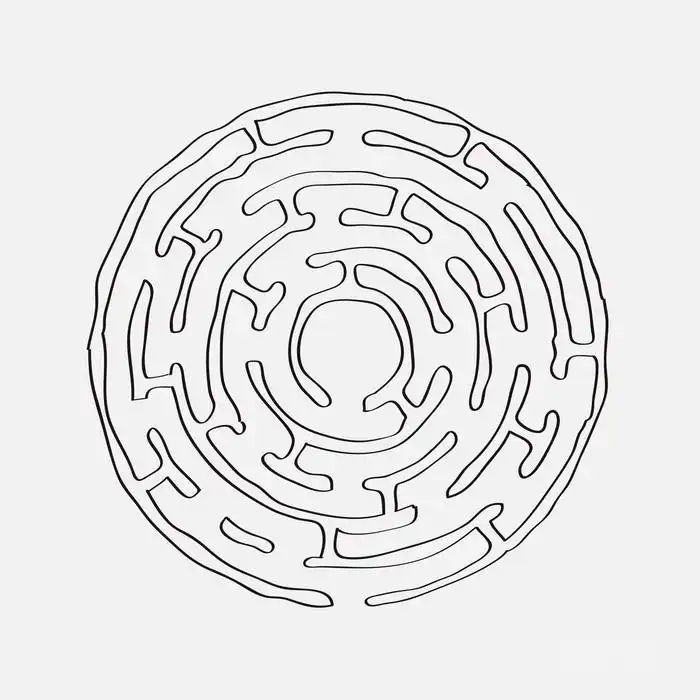Mazes are often seen as games for kids. But now, more seniors are using pens and paper to find joy and calm in winding paths. From nursing home art classes to home desks, older adults are redefining mazes—not just as brain games, but as a way to connect with themselves.

1. Mazes: A “Brain Gym” Against Aging
Studies show drawing mazes activates the brain’s prefrontal cortex and hippocampus, slowing memory loss. A University of California experiment found seniors over 60 who drew mazes twice a week improved spatial and logic skills by 23%.
Example:
Grandma Li, 78, a retired teacher, started coloring mazes daily after her grandson gave her an Adult Stress-Relief Maze book. Six months later, she joked: “I used to forget to turn off the stove. Now I remember every dead end in my mazes!”
2. Lines as Emotional Outlets
For many lonely seniors, mazes are safe spaces for feelings. Therapists found older adults often weave life stories into their designs:
Twisted paths: Sorting through past regrets.
Hidden exits: Hopes for the future.
Repeating patterns: A calming meditation ritual.
In a Beijing nursing home’s “Memory Maze Therapy,” seniors with mild Alzheimer’s drew maps of childhood homes—and unlocked forgotten memories.
3. Bridging Generations
While young people play video games, many seniors bond with grandkids through mazes:
Shanghai grandpa-granddaughter duo: Grandpa creates math mazes; granddaughter solves them.
Online buzz: The TikTok hashtag #GrandparentsDrawMazes hit 100M views, with youth challenging elders’ “life mazes.”
Cultural roots: Folk artists turn traditional paper-cut patterns into mazes for community classes.
This role reversal breaks the “tech gap,” letting seniors share wisdom and feel valued again.
4. Senior-Friendly Maze Designs

Easy on the eyes: Use high-contrast colors and thick paths (avoid lines thinner than 3mm).
Relatable themes: Markets, bus routes, or other familiar scenes.
Better tools: Anti-shake pens and rotating boards ease joint pain.
Social fun: Team mazes or point-based challenges.
In Japan, seniors love “healing mazes” with cherry blossom branches instead of sharp lines—gentle art that also helps hand rehab.
Conclusion: Mazes Have No Age Limit
When 80-year-old Grandpa Wang won a nursing home maze contest, he pointed to his zigzag bridge design and said: “Life is like a maze. When I was young, I looked for shortcuts. Now I slow down and enjoy the twists.” That maze-drawing pen? It’s a key to unlocking life’s treasures.
This post is also available in Afrikaans, Azərbaycan dili, Bahasa Indonesia, Bahasa Melayu, Basa Jawa, Bosanski, Català, Cymraeg, Dansk, Deutsch, Eesti, Español, Esperanto, Euskara, Français, Frysk, Galego, Gàidhlig, Hrvatski, Italiano, Kiswahili, Latviešu valoda, Lietuvių kalba, Magyar, Nederlands, O'zbekcha, Polski, Português, Română, Shqip, Slovenčina, Slovenščina, Suomi, Svenska, Tagalog, Tiếng Việt, Türkçe, Íslenska, Čeština, Ελληνικά, Беларуская мова, Български, Кыргызча, Македонски јазик, Монгол, Русский, Српски језик, Татар теле, Українська, Қазақ тілі, Հայերեն, עברית, ئۇيغۇرچە, اردو, العربية, سنڌي, فارسی, كوردی, پښتو, नेपाली, मराठी, हिन्दी, অসমীয়া, বাংলা, ਪੰਜਾਬੀ, ગુજરાતી, தமிழ், తెలుగు, ಕನ್ನಡ, മലയാളം, සිංහල, ไทย, ພາສາລາວ, ဗမာစာ, ქართული, አማርኛ, ភាសាខ្មែរ, 日本語, 简体中文, 繁体中文 and 한국어.
